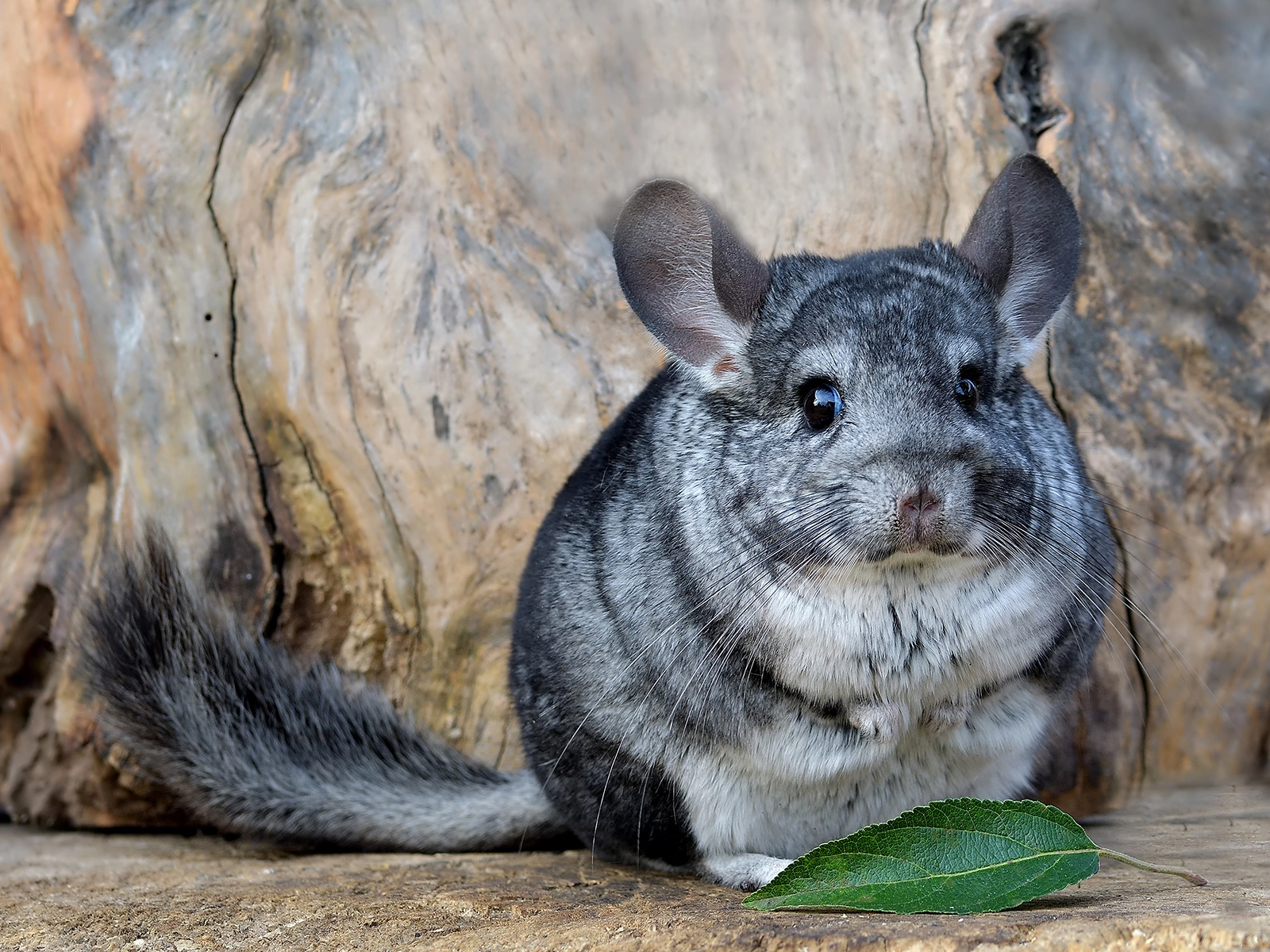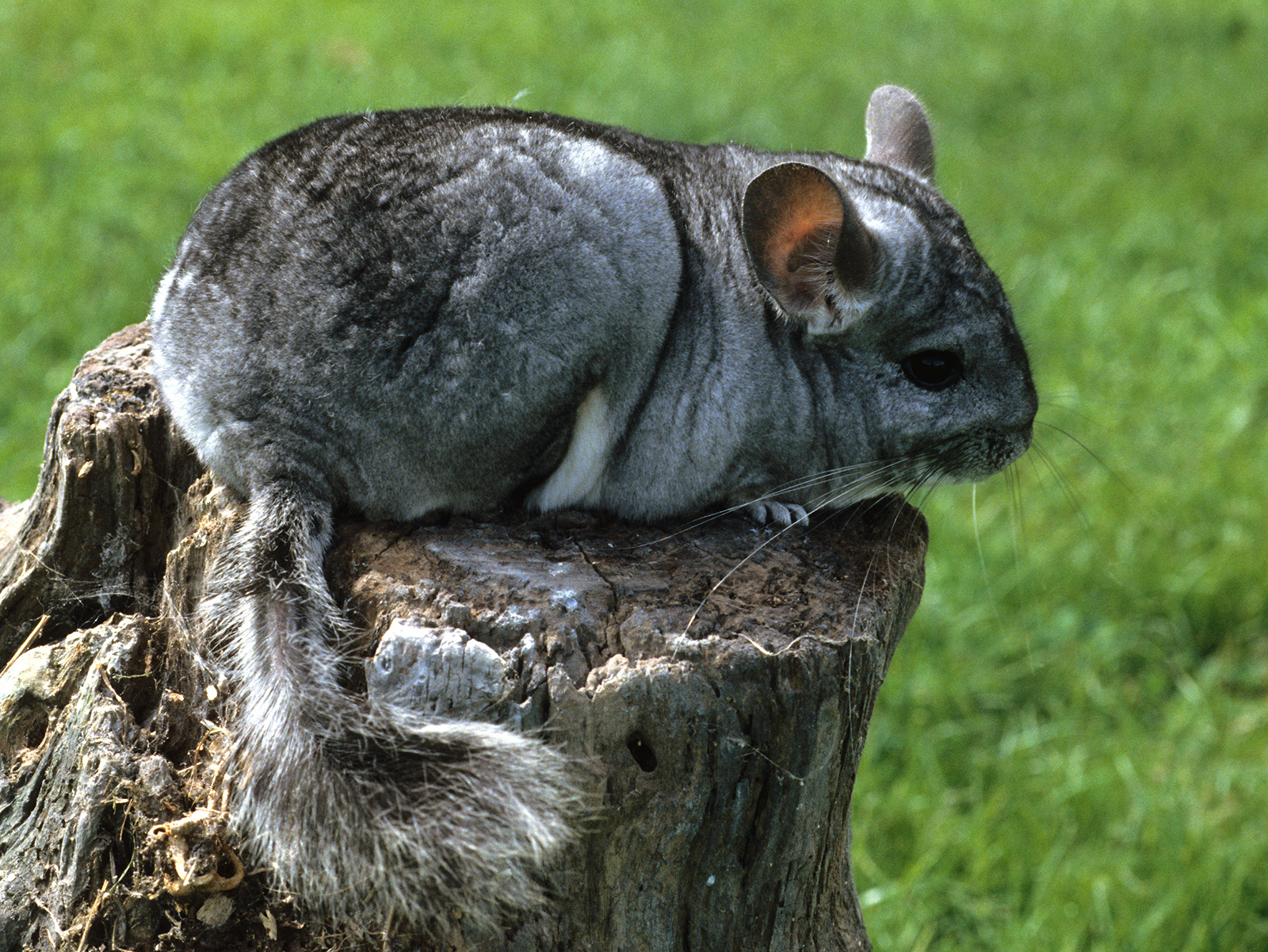Long-tailed Chinchilla
Chinchilla lanigera
The long-tailed chinchilla is nocturnal (active at night).
Class
Mammalia
Order
Rodentia
Family
Chinchillidae

The long-tailed chinchilla is nocturnal (active at night).
Mammalia
Rodentia
Chinchillidae
Andes Mountains of northen Chile
Length: 9 - 14 in body with 3 - 6 in tail
Weight: Male 1 lb/Female 1.76 lbs
Rocky, mountainous areas from 9,800 to 16,400 feet, den in crevices and holes
Litters of 1 - 6 young, two litters/year
Gestation: 4 months
Herbivores, feeding on a wide variety of vegatable matter including seeds, grass, leaves, roots, lichen, and mosses, as well as insects and eggs when they can get them
Endangered
This thick fur keeps them warm in the high elevations of the Andes.
For over a century, chinchillas have been relentlessly hunted for their exceptionally soft, dense fur, which is highly valued in the fashion industry. Historically, hundreds of thousands of chinchilla pelts were exported annually from Chile, and the fur is still considered one of the most valuable in the world.
Despite protective laws put in place, wild chinchilla populations are still in decline. They are still illegally hunted in some remote areas, and their habitats are also being lost and degraded.
Be a Smart Consumer. Avoid buying any products made from animal fur. This includes items labeled "faux" to ensure you are not contributing to the illegal fur trade. The demand for chinchilla fur is what drove the species to the brink of extinction.
Choose a Reputable Pet Source. If you are considering a pet chinchilla, ensure you acquire it from a responsible, captive-bred source. Do not purchase a chinchilla that was captured from the wild.
